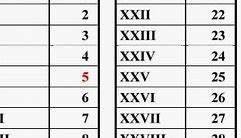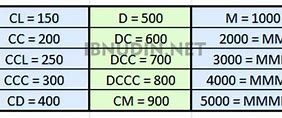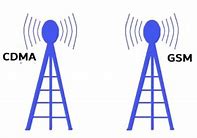
Funding and joint venture
The China Railway Group Limited (CREC) will form a joint venture with a consortium of Indonesia's state-owned enterprises (SOEs) led by PT Wijaya Karya Tbk in developing the first High Speed Train (HST) in the country.[63]
On Friday, 16 October 2015, Chinese and Indonesian state-owned companies officially signed the deal to build the first high-speed railway in Indonesia.[64] The project cost was estimated to be US$5.5 billion (80 trillion rupiah). The deal was signed by China Railway International Co. Ltd. Chairman Yang Zhongmin and Dwi Windarto, the president director of a consortium of Indonesian state companies, PT Pilar Sinergi BUMN Indonesia.[65] China Development Bank has given a commitment to fund 75 percent of the project costs with loan terms of 40 years for the loan—with an initial grace period of 10 years—with fixed loan rate. CRCC will hold majority shares in the planned JV company, while WIKA holds 30 percent and small portions for local toll operator PT Jasa Marga Tbk (IDX: JSMR), train operator PT Kereta Api Indonesia and plantation company PT Perkebunan Nusantara VIII.[63]
In late August 2016, it was reported that the China Development Bank had not yet disbursed funds for the loan and that KCIC, the consortium executing the project, was not sure when funds would become available.[66]
In mid-February 2020, construction progress reached 44 percent and land acquisitions reach 99.96 percent.[80] Due to the COVID-19 pandemic, work of the project has been halted temporarily, resulting in the delay of the targeted finish of construction and start of the operation.[81] Three months later, construction progress reached 48.3 percent and the construction works resumed, which follow government's health and safety measures, such as social/physical distancing in response to the pandemic.[82] In September, Director of KCIC Xin Xuezhong stated that construction progress reached 60 percent and land acquisitions reached 100 percent.[83][84]
According to the Jakarta Post, Dwiyana Slamet Riyadi, the president director of KCIC, said that based on a 2022 third-party review, demand for the Jakarta-Bandung High-Speed Rail line had fallen to 31,215 passenger trips per day, just over half of the 61,157 estimated in a 2017 feasibility study.[91]
In 2023, Indonesian and Chinese authorities discussed further plans to extend the railway across the Java island.[97][98] It is estimated that Phase 2 will shorten the travel time between Jakarta and Surabaya from 8 to 13 hours by regular trains to 3.5 hours.[99]
Șoseaua Pantelimon nr. 248-250, bloc 59-60, mezanin, Sector 2 -
It may only be a mile, but It All Starts Here!
Be a part of this historic event--the celebration of one of the biggest transportation projects Arizona has seen since the opening of the first freeway.
And, not only is Mesa welcoming a light rail station, we are also introducing
and re-routing some buses routes to service the light rail station.
Saturday, December 27, 200810:00 a.m. - 5:00 p.m.Sycamore Transit Center(Sycamore & Main St.)
Development and construction
In January 2016, the Indonesian transportation minister released a route permit[42] for a high-speed railway between Jakarta and Bandung (142.8 kilometres) with stations located at Halim (Jakarta end), Karawang, Padalarang, and Tegalluar (Bandung end) with a Tegalluar depot.[43] 71.63-kilometre (44.51 mi) of the track would be at ground level, 53.54-kilometre (33.27 mi) would be elevated, and 15.63-kilometre (9.71 mi) would be underground.[44] The concession period, the period during which only the KCIC can operate the line, is 50 years from 31 May 2019 and cannot be prolonged, except in a force majeure situation.[45] Ground was broken on the project on 21 January 2016 and was expected to be completed in September 2023. The HSR is governed by the KCIC, an organization composed 60 percent by an Indonesian consortium, and 40 percent by China Railway International.[46] The Jakarta–Bandung high-speed rail was planned to begin its operations in 2019.[47]
In October 2016, the Indonesian government announced its intention to build a 600-kilometre (370 mi) medium-high speed railway between Jakarta and Surabaya, and invited Japan to participate in this project.[48] However, almost seven years later, in July 2023 the project was cancelled due to the lack of progress. Subsequently, President Joko Widodo removed the Jakarta-Surabaya semi-high speed train from the national strategic project (PSN) towards the end of his term in 2024.[49]
In 2023, the Jakarta-Bandung High-Speed Rail construction partially finished and was set to start commercial operation starting October 2023.[50] The Jakarta-Bandung HSR began trial operation with passengers on 7 September 2023, and commercial operations on 2 October 2023.[51][52]
In April 2016, five Chinese high-speed rail project workers were arrested at Halim Perdanakusuma Airbase.[53] This incident highlighted the refusal of Indonesian Air Force to give up lands belonging to the Halim Perdanakusuma airbase in East Jakarta. It was reported that one of the railway stations would be located on land currently within Halim Airbase.[54]
In February 2018, Onan Hiroshi, a Japanese cartoonist, described Indonesian President Joko Widodo as a "High-speed rail beggar"[55] pointing out Indonesia's request for Japan's assistance in completing the project. The cartoon quickly drew protest from Indonesian internet users, and by 25 February, the cartoonist tweeted an apology, removed the drawings, and closed the page.[56]
11% of the railway consists of tunnel sections spanned over 13 tunnels, while 38% is set on viaducts. Tunnel 6, the longest tunnel, has a length of 4,478 meters on the Jakarta-Bandung high-speed rail.[57] Halim railway station, the largest station on the railway, is situated in Makasar in East Jakarta and consists of three platforms with six track lines; it is expected to connect with LRT Jabodebek. The station has a total area of 78,315 square metres.[58]
The railway is built on a double track and electrified, suitable for 350 km/h (220 mph).
There are four stations on the line.[59] One of them, Karawang, has been finished, but has no plans to open soon.
The Jakarta-Bandung High-Speed Rail will use 11 trainsets of the derivative of CR400AF called KCIC400AF.[61][62] There is also one comprehensive inspection train which is also a derivative of CR400AF called KCIC400AF-CIT.[61][62] All trains are manufactured by CRRC Qingdao Sifang.[61][62]
From Wikipedia, the free encyclopedia
Railway service in Indonesia
Kualanamu Airport Railink Services (ARS) (Indonesian: KA Bandara Kualanamu) is an airport rail link service in Medan in North Sumatra, Indonesia. The rail link is built to cut travel time from Medan railway station to Kualanamu International Airport, as roads connecting the airport and Medan city center are frequently affected by traffic congestion. [citation needed]
The Kualanamu ARS is the first airport rail link in Indonesia connecting passenger between the city centre and airport.[citation needed]
Train services is provided by PT Railink, a joint venture between PT Angkasa Pura II and PT Kereta Api Indonesia. It is the first integrated airport rail link in Indonesia, city check-in and electronic tickets are also available for convenience.[1] The trains were manufactured by Woojin Industrial Systems in South Korea.[2]
In May 2014, double-tracking was completed, cutting travel by at least 10 minutes.[3] The first stage of double tracking, Kualanamu-Bandar Khalipah is predicted to be finished in end 2015, while the second stage as fly over Bandar Khalipah-Medan city is predicted to be finished in mid-year 2016.[4][needs update]
The elevated tracks running from Medan Station up till Araskabu Station started operating on 1 December 2019. Beginning 28 September 2022, train services began making brief stops at Bandar Khalipah Station.
Wih, udh 2.3 aja nih ( ✧Д✧)
Di phase pertama kita akan kedatangan Firefly atau yang juga dikenal dengan SAM, sang anggota Stellaron Hunter. Dan kita juga akan kedatangan Ruan Mei, anggota Genius Society yang bercita cita menjadi emanator Σ(゚Д゚;)
Siapa saja nih, yang bakalan gacha mereka?
Bagi yang dapat atau belum beruntung, bisa nih curhat dengan mereply postingan ini!
Short cancellation and resumption
President Joko Widodo was expected to announce the winning bid of Indonesia's first high-speed rail project in early September 2015. However, on 3 September 2015, the Indonesian government announced that it had cancelled the high-speed rail project, and was now favouring the slower and cheaper rail alternative.[35]
In mid-September 2015, China announced it would fully meet the Indonesian government's demands and offered a new proposal that did not require Indonesia to assume any fiscal burden or debt guarantee in proceeding with the project.[36] Later that month, Indonesia selected China for the $5 billion project.[37][38][39] Indonesia awarded the contract to China. Some analysists speculated that Beijing had outmaneuvered Tokyo on the bid as a result of a competitive financing package for Indonesia.[31][40]
Japan's then-Chief Cabinet Secretary Yoshihide Suga called the Indonesian move "difficult to understand" and "extremely regrettable".[27][30] The situation "can only be described as extremely deplorable," Suga also said.[36] Indonesia's State-Owned Enterprises Minister Rini Soemarno confirmed the Chinese bid was picked instead of the Japanese plan because of its relaxed financing.[41]
China supplemented its bid by committing to establish a joint venture with Indonesian firms to produce rolling stock for high-speed rail, electric rail, light rail systems, not only for Indonesia but also for export to other Asian countries; to transfer related technology; and to renovate and rebuild train stations.[25]
FCR Group Usi din Sticla Sibiu | Pereti Despartitori din Sticla | Compartimentari Open Space cu Sticla | Balustrada din Sticla | Sticla Securizata Sibiu
De ce noi ? FCR Group este alaturi de dumneavoastra, mereu în pas cu noile tehnologii în matrerie de sticla de toate tipurile, tocmai pentru a va ajuta sa preveniti situatiile neplacute. Produsele oferite de FCR Group respecta cele mai inalte standarde europene de la montaj balustrade din sticla, usi din sticla, cabine de dus, partitionari cu sticla, compartimentari cu sticla securizata, pereti din sticla, sticla colorata, partitii cu sticla, paravan dus etc pana la accesorii si sisteme pentru sticla securizata.
Proiectele dvs din sticla securizata, fie ca e vorba despre balustrada din sticla, usi din sticla, Pereti Despartitori din Sticla, compartimentari birouri cu sticla, cabine de dus, pot fi realizate cu produse de claitate din sticla securizata cu accesorii si sisteme din import
NOI OFERIM EXPERIENTA NECESARA ATUNCI CÂND VINE VORBA DESPRE PROIECTE DIN STICLA. Echipa noastra va va oferi solutii care îndeplinesc cele mai înalte standarde de eficienta confort, siguranta si energie. De la Compartimantari birouri din sticla, Partitii birouri cu sticla, Pereti din sticla securizata, Partitii cu pereti din sticla compartimentari birouri, cabine dus, usi din sticla, vitrine, placari din sticla, balustrada din sticla, balustrada sticla, balustrada sticla pentru terasa, sticla balustrada, sticla balustrada scari, balustrazi terase, balustrade, balustrada, balustrade din sticla securizata, balustrade din sticla, balustrade din sticla pentru terasa, pergole din sticla, pergole, copertine din sticla, balustrade pentru scari, balustrada scari din sticla, balustrada din sticla pentru balcon , paravan anti vant, balustrade terasa, balustrade pentru terasa etc oferim totul pentru ca imobilul construit sau modernizat sa devina eficent energetic pe întreaga suprafata vitrata.
Indonesia operates a single high-speed rail service between two of the country's largest cities, Jakarta and Bandung. It is branded as Whoosh (short for Waktu Hemat, Operasi Optimal, Sistem Hebat, lit. 'Timesaving, Optimal Operation, Outstanding System')[7][8][9] and operated by Kereta Cepat Indonesia China (KCIC).[10]
Whoosh is the first high-speed railway in Southeast Asia,[11] as well as being the only high-speed railway in the Southern Hemisphere.[12] It covers a distance of 143 kilometres (89 mi) with a maximum operating speed of 350 km/h (220 mph),[13][4][14] and design speed of KCIC400AF train of 420 km/h (260 mph),[6][15] making it the fastest commercially operating railway network in the world, tied with a handful of lines in China. The travel time between the two cities averages 45 minutes, down from 3 hours with existing railway line.[12]
With the cost of $7.3 billion to build,[16][10][17][18] the line began trial operation with passengers on 7 September 2023 and commercial operations on 17 October 2023.[19][20][21] The Whoosh high speed train has served 5.0 million passengers during 11 months of commercial operation.[1][3] As of September 2024, there are 62 daily trips of Whoosh.[3]
History and development
Concepts for high-speed rail (HSR) in Indonesia were first seriously contemplated in 2008, leading to discussions at Asian Investment Summit in 2013, and detailed plans being set forth in 2015.[22] The plan to start construction of the Jakarta-Bandung HSR was announced by the Indonesian government in July 2015, after the Chinese President and other world leaders visited the Bandung Conference.[23][24]
Both Japan and China expressed their interest in the high-speed rail projects in Indonesia. Previously, both countries had carried out comprehensive studies into a project for the Jakarta–Bandung section (142.8 km (88.7 mi)). Only the Japanese International Cooperation Agency (JICA), had issued a study for a project extending to Surabaya (730 km (450 mi)).[23] The Indonesian HSR bid marked a rivalry between Japan and China in their competition for Asian infrastructure projects.[25]
Since 2008, Japan has been working on a plan to export their Shinkansen high-speed railway technology to Indonesia. During the Indonesia-Japan Friendship Festival in November 2008, Japan showcased their Shinkansen technology to Indonesian audiences.[26] The idea of high-speed rail backed by funding through soft loans has been proposed by Japan International Cooperation Agency (JICA) for the Indonesian island of Java, linking up the densely populated corridor from the capital Jakarta to Surabaya (730 km (450 mi)).[27][28] The island, similar in many respects including terrain and urban density to pre-HSR Honshu, suffered greatly from both freight and passenger congestion.[29]
The idea had been around for some years. However, a new proposal to divide the project into stages emerged, with the first stage being built from Jakarta to Bandung. The conventional travel time of 3 hours would be reduced to 35 minutes at a price of 78 trillion rupiah. JICA finished the detailed feasibility study in 2014. This succeeded an initial study in 2012. By 2013 Indonesia had been undergoing a revival in railway expansion and upgrades. High-speed corridors had been proposed but not implemented.[citation needed]
Japanese domination in the high-speed rail project appeared to be unchallenged until April 2015, when China made a counter-offer.[30]
In March 2015, Indonesian president Joko Widodo travelled to Tokyo and Beijing. In Tokyo, from 22 to 25 March, Joko Widodo met then-Japanese Prime Minister Shinzo Abe. Widodo obtained a commitment for Japanese loan support for improving Jakarta's municipal rail network, but no progress was made on resolving issues with the Jakarta–Bandung high-speed rail project.[25]
On 26 March 2015, Joko Widodo visited Beijing and met China's leader Xi Jinping. Xi publicly announced support for the Indonesian high-speed project and the two governments signed a memorandum specifying China's interest in the Jakarta–Bandung line.[25] In April 2015, China submitted a bid for the Indonesian high-speed rail project, much to Japan's dismay.[31]
In July 2015, the Indonesian government released its plan to build the high-speed rail connecting Jakarta and Bandung, and arranged a contest between Japanese and Chinese train-makers as potential bidders.[23] China responded by launching the Chinese High-speed Rail Technology Exposition in Senayan City shopping mall in Jakarta in August 2015.[32]
Both China and Japan have engaged in fierce competition through intense lobbying for the contract. Some, including the Jakarta Post's Craig Oehlers, have said that the fundamental reason for the two countries' competition is geostrategy, rather than economics.[33][34]























